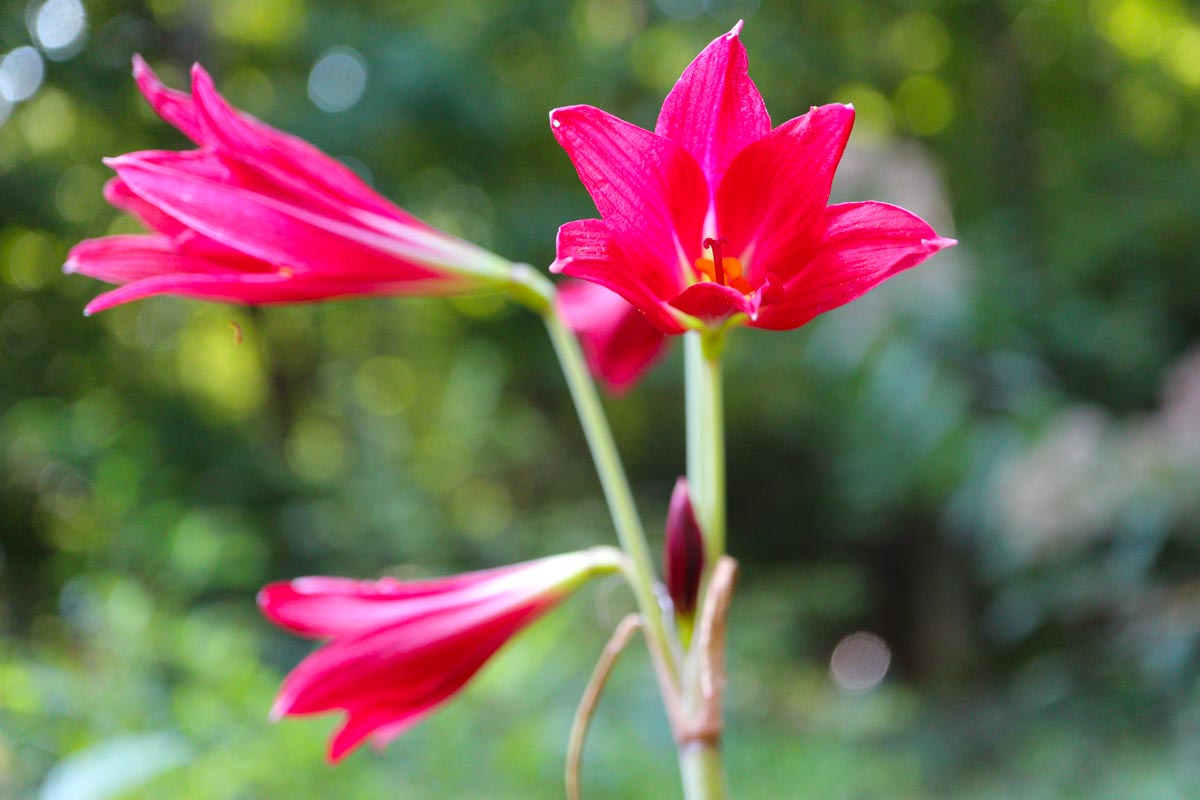When I bought my first house, in central North Carolina, my gardening instinct immediately kicked in. My dad and aunt nurtured my love of plants, and after more than a decade of dorm and apartment living, I was thrilled to have room for a garden. With six acres, my interest rapidly turned to obsession, and I was cultivating every plant I could find.
I enrolled in a master gardener program, where a group of us learned all the nuances of growing green thumbs. My class was mainly women, and I was introduced to a local sisterhood of gardeners. As part of the program, we created a garden downtown, and from them I learned about the classic southern tradition of passalong plants. These are treasures shared by friends and neighbors, bringing stories with each gift. For me one of these was the oxblood lily.
They originally came from the Argentinian Andes in the early 1800s. This cultivar ‘Hill Country Red’, has been shuffled through a variety of genera, including Amaryllis, Habranthus and Hippeastrum. For now, it is known as Rhodophiala bifida, commonly called hurricane lily. This might be in reference to how it often flowers after rain, staying dormant through hot, dry summers until rains encourage flowering late in the season.
Over the years in successive gardens I have explored new plants, and revisited old favorites. It has taken 30 years, but I finally got my second oxblood lily this past November. After initially planting it hundreds of feet away I decided to move it closer to the house so I could keep an eye on it.
The bulb came with green growth, but almost immediately it got very cold here, and the leaves began to look worse for wear. My garden is at the edge of its hardiness zone, so I decided to help it settle in. Though generally I ask my plants to survive on their own, if a plant starts looking seriously stressed, I provide some pampering. Through the coldest days of winter, when the temperature dipped below freezing, I would cover it with an inverted flowerpot I removed when the day warmed up again. With this treatment, the leaves stayed fresh through the winter, and well into spring. When it went dormant, I really wasn’t sure what would happen next.
This week I had my answer. Almost overnight a flowering stalk around a foot tall rose up, with half a dozen brilliant red blooms. Each lasted a day or two, but as one faded another would open. In mature plants, this show might last a full month. Mine is already past its peak in just a week. But they are said to live 50 to 100 years, so I expect to watch this showy display for many seasons to come. As I enjoy its bloom, I think fondly of my gardening friends from decades ago who introduced me to this plant jewel. Gardens are tapestries woven of memories, held together by blossoms we share.
